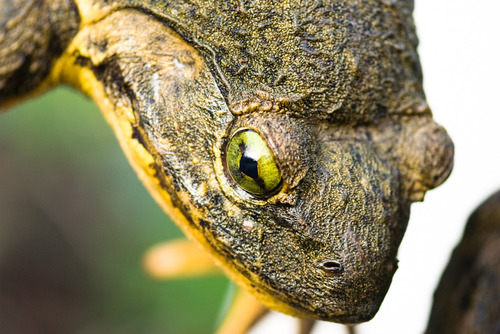
Goliath Frog
The Goliath frog, Conraua goliath, is a giant of the amphibian world, leaping through West African rainforests. Its sheer size and strength support a diet of insects and small animals, playing a crucial role in its ecosystem. An extraordinary creature, it captivates with its powerful leaps and colossal presence.
15 years
Lifespan
590.0 - 3266.0 g
Weight
Length: 15 - 32 cm
Size
Brown, Yellow, Green, Orange
Color
10-12 months
Age of Sexual Maturity
Endangered
Conservation Status
Decreasing
Population Trend
Characteristics
Conraua goliath, known as the Goliath frog, is the largest frog species in the world, inhabiting the rainforests of Cameroon and Equatorial Guinea. It can grow up to 32 cm in length and weigh over 3 kg. This nocturnal amphibian primarily feeds on insects and small animals, and its powerful legs allow for impressive jumping ability.
Distribution Range of the Goliath Frog
Conraua goliath, commonly known as the Goliath frog, is native to a specific region in Central Africa. Its geographical distribution is limited to the coastal rainforests of Cameroon and Equatorial Guinea. This area represents the only known natural habitat for this species.
Goliath Frog's Habitat
Environmental Conditions
The Goliath frog inhabits dense, humid rainforests that are characterized by high levels of rainfall and humidity. These environments typically have warm temperatures and are located near swift-flowing rivers and streams, which are crucial to the frog's life cycle, particularly for breeding.
Ecological Niche
The Goliath frog occupies a niche as both a predator and prey within its ecosystem. It primarily feeds on a variety of invertebrates and small vertebrates that are abundant in its rainforest habitat. Its role as a large amphibian predator helps regulate the populations of these prey species. Additionally, the presence of fast-flowing water is essential for its reproduction, as the species lays eggs in areas where water flow provides oxygenation and protection from predators.
Copyright @ Nature Style Limited. All Rights Reserved.
 English
English